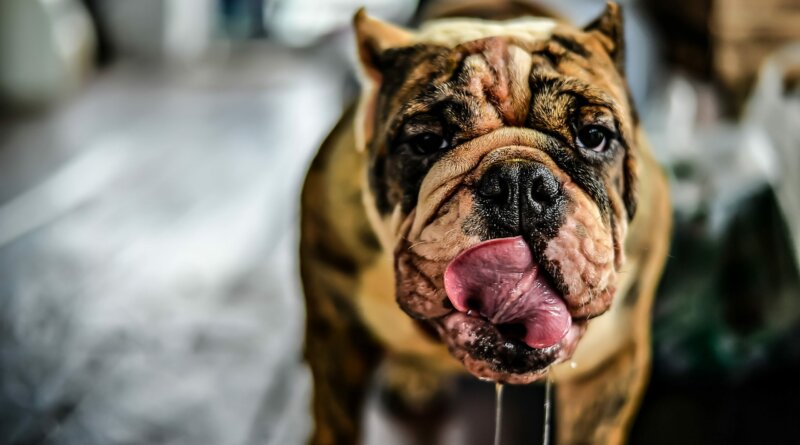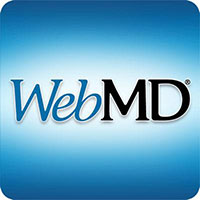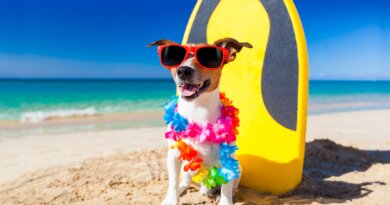My Dog’s Excessive Drooling
Dog’s excessive drooling comes hand-in-hand with our furry companions and is a normal phenomenon for dogs of all sizes. Depending on the breed of dog, the amount of drool can vary considerably. Although it can be slimy and gross, it’s important to understand that drooling plays a key role in a dog’s overall health and wellbeing. Responding to stimulation, drool lubricates a dog’s mouth and aids in the digestion of food. It also helps prevent gum diseases and tooth decay.
Although it can be normal, there are times when drooling can be quite excessive, to the point of interfering with eating, drinking, or activity level. While some breeds naturally drool more than others, there are certain instances when excessive saliva can indicate an underlying medical condition. If your dog has loose-hanging lips, you’re likely going to find larger amounts of drool (for example, Great Danes, Newfoundland, Basset Hounds, or St. Bernard).
Before finding a solution to your dog’s excessive drooling, it’s important to determine the root cause of the issues. After all, getting rid of the problem entirely is always the ideal situation. To determine what is causing the excessive drooling, it’s important to consider the following options as potential culprits.
Mouth Anatomy
Certain breeds are prone to drooling because of their facial structures. These breeds include Mastiff, Great Danes, Bloodhounds, Newfoundland, and Bulldogs. You can do nothing from a breed standpoint to decrease your dog’s excessive drooling based on the drooping jowls and loose lower lips. These genetic formations influence the ability to hold in saliva, making these breeds extremely likely to have high levels of drool.
Causes of Dog’s Excessive Drooling
Expecting Food or Treats
Saliva aids digestion, which means the anticipation of food or something delicious will trigger the salivatory glands. In fact, many dog’s excessive drooling happens a lot when they’re expecting treats, snacks, or a meal. This is completely normal and expected, no different than the thought of a delicious treat might make you drool too.
Foreign Object
Occasionally objects can become stuck or wedged in the dog’s mouth, which can cause painful inflammation and excessive salivation. Sticks, toys, stones, or insects can occasionally become wedged (especially at the mouth roof). If the item is reachable without the risk of being bitten, removing the item is the easiest way to stop the drooling. If the foreign object has punctured the area, always contact the vet immediately. Never attempt to remove a punctured or embedded object.
Dental Issues
One issue with a dog’s excessive drooling is the connection to dental issues and problems. These can include inflamed gums, broken teeth, periodontal disease, gingivitis, or tartar buildup. Watch your pet for any ongoing changes or issues. These include suddenly becoming head shy (where they avoid any contact with their snout or head entirely), red or bleeding gums, bad breath, loose teeth, blood found on toys or bones, or lumps and bumps in the mouth. Any suspected, dental issue should be evaluated by a veterinarian as soon as possible.
Heatstroke
It doesn’t have to be excessively hot for a dog to suffer from heatstroke. In fact, too much time in the sun can cause ongoing issues – without the constant heat. If your dog is suffering from lethargy, drooling, and becomes unresponsive, it may be an indicator of heatstroke. To rule out other serious issues, always have your pet evaluated by a veterinarian.
Ingesting Poisonous Plants, Animals, or Caustic Agents Can Cause a Dog’s Excessive Drooling
Curious animals often get into items they shouldn’t, making dogs no different from an interested toddler. Plants like azaleas, tulips, and chrysanthemums can cause excessive drooling in dogs. Spiders, insects, scorpions, and toads can also cause a physical reaction in your dog if they become exposed. This is particularly true if the canine ingests or eats the toxic or poisonous item.
Caustic agents include household cleaners that are often acidic in nature that irritate the lining of your dog’s mouth. This irritation can cause a dog’s excessive drooling, which should lessen as the agent dissipates.
Changes to Mouth Structure
Whether it’s a scrape, cut, wart, or growth, changes to the interior of your dog’s mouth can often be associated with excessive drooling and salivation. Always check for red or purple gums accompanied by bad breath. If you notice bad breath, the odor may indicate an infection that needs to be treated.
Anxiety, Stress, or Motion Sickness
Dogs are susceptible to drooling when under pressure, which includes mental stress and anguish. If your dog isn’t used to riding in the car, for example, the nauseated feeling may cause additional saliva production.
Gastrointestinal Issues
Reflux occurs when your dog’s stomach acid, food, or fluids comes back up through your dog’s esophagus and mouth. These items can increase your dog’s excessive drooling, especially when the fluid is higher acid. Kidney and liver disease can also cause excessive salivation in dogs.
Salivary Gland Inflammation or Allergic Reactions
Disorders within the salivary glands or an abscess (a deep-rooted infection) can cause excessive drool in pets. If your dog is drooling due to an allergic reaction, there may be an increased chance of a severe reaction taking place. As such, always make sure you monitor symptoms throughout the day, contacting your vet in the event of worsening symptoms.
Seizures or Infectious Diseases
Although a dog’s seizures are relatively harmless, they can cause drooling or foaming at the mouth. There are multiple causes for seizures, so it’s important to contact your veterinarian whenever you suspect your dog has had one. Similarly, infectious diseases like distempers and rabies can also cause foaming at the mouth and excessive drool as the disease continues to spread. Thankfully, both infections are preventable with regular vaccinations.
How to Reduce Your Dog’s Excessive Drooling
Once you’ve determined the cause of your dog’s excessive drooling (especially if this characteristic is not common), there are a few things you can do to reduce or eliminate the problem. These are also helpful in healing particular issues (like cuts, abrasions, sores, or inflammation).
Use a Pill, Fresh, or Tincture from Ginger
No one likes feeling nauseous, and your dog is included. That’s why any motion sickness your dog is experiencing needs to be treated promptly. Using ginger is a fast and pet-friendly way to limit drooling or salivating on the go. Just as effective as Dramamine, this method contains minimal side effects. Shogaol and gingerol are both anti-nausea properties that give both distinct tastes and help aid the digestive process. Ginger also contains many anti-inflammatory effects, which can eliminate nausea while soothing the dog’s digestive tract.
Herbal Tea Rinses and Coconut Oil
If your pup is suffering from a mouth injury, there are a few products you can use to help aid in the healing process. Rinsing your pup’s mouth with a strongly brewed herbal tea (like chamomile, for example) can bring soothing properties to the area. Tea can also help reduce discomfort and itching as well. Likewise, coconut oil is another product that contains antibacterial properties – rich in medium-chain fatty acids. These fatty acids are perfect for fighting against yeast, parasites, bacteria, viruses, and fungi.
Brushing Your Dog’s Teeth
Oral hygiene can create massive problems for your dog, particularly when it comes to saliva and drool. Using a simple preventative action like brushing, you’ll lessen the chance of inflamed gums, pain, or tartar. It can also help reduce your dog’s excessive drooling tendencies. Make sure to use a toothpaste and toothbrush specifically designed for dogs, easing your pup into the practice rather than creating a highly stressful situation.
Offer Treats Before Car Rides
When you’ve connected the increase of drool with frequent car trips, there’s a chance that your dog may be stressed or anxious about traveling. Ensure that you feed your dog three hours in advance of any travel to limit the chance of nausea or vomiting in the car. It’s also a great option to start building a positive connection with the car by feeding your dog a few delicious treats before a car trip. Please don’t feed your pup a large number of threats, but the idea is to have him associate car travel with yummy food.
If your dog is prone to chew bones or high-quality toys, bring a few for the next car trip. The activity may distract him enough to lessen your dog’s excessive drooling during car trips.
Increase Access to Clean Drinking Water
During warm summer months or any time your dog will be outside in the heat, always have access to clean water. Hydration will prevent heatstroke during play periods, but it’s important to limit the amount of time you’re out in the hot afternoon sun (when the heat and humidity are highest). If possible, always use a water fountain that allows a constant circulation of the water. This will keep the water clean and fresh for longer periods of time.
Examine Your Dog’s Mouth for Potential Problems
Whether your dog enjoys chewing sticks at the park or prefers to nibble at his favorite toys at home, it’s always a smart idea to periodically check the inside of your dog’s mouth for potential problems. Look at the gum line for signs of inflammation, redness, or scrapes. Inspect all of your dog’s teeth for any cracks, chips, fractures, or breaks. Inspect the roof of your dog’s mouth for any stuck objects, lumps, sores, or lesions.
Although your dog may have a foreign body stuck in its mouth, it may not be irritating initially until inflammation or infection sets in. As with most medical issues, it’s always easier to deal with a problem before it becomes problematic. If you suspect your dog has an infection, it’s important to have your veterinarian diagnose the problem. You may need to get antibiotics and pain relievers to clear the problem.
Thuja
Thuja is often used to treat many lumps and bumps found within a dog’s mouth, from warts, cysts, eruptions, or unusual rashes. This home remedy is a tried-and-true method of wart removal by many dog owners and can help reduce the excessive drool your pup is experiencing. Always speak to your vet about treatment before trying any at-home treatment, especially if there is an onset of new physical symptoms like drool.
Dog’s Excessive Drooling Can Be Just a Part of Life…
Bandana or Drool Rag
Sometimes, eliminating excessive drool isn’t an option, especially if your dog has loose jowls. In these situations, having a drag or bandana handy is a simple remedy for those owners wanting to get a handle on their dog’s drool. Always make sure to wipe your dog’s mouth after any play periods, training, or going for a walk (when the dog will be working harder than normal). Make sure any rags are made of absorbent materials designed to wick away moisture. Take care to inspect the jowls and under the dog’s chin too.
Use Furniture Protectors
While we’d love nothing more than having beautiful furniture, sometimes our furry companions make that difficult. When in doubt, cover any furniture with removable towels or blankets to safeguard against saliva. You can also purchase specific pet products designed to protect your furniture from drool, creating an inviting environment for your dog (making car trips easier) without sacrificing your vehicle.
Final Thoughts About Your Dog’s Excessive Drooling
Although excessive drool isn’t always the most enjoyable to deal with, most of the time, there’s nothing to worry about health-wise. Pay attention to any new or worsening symptoms, especially if your dog isn’t naturally a drool-worthy breed. Once you’ve ruled out any serious medical conditions or ailments, taking care of drool becomes nothing more than trying to limit the quantity and protecting your furniture (and guests, occasionally) from the constant saliva. By keeping a sense of humor about the unfortunate timing of situations and continuing to check your pet’s mouth for ongoing concerns, you’ll both be able to adapt to less drool long-term.
Unfortunately, no number of tips or tricks will reduce the amount of drool or excessive saliva for some dogs – regardless of what you try.
Read Next: 11 Science-Based Dog Teeth Care Tips













